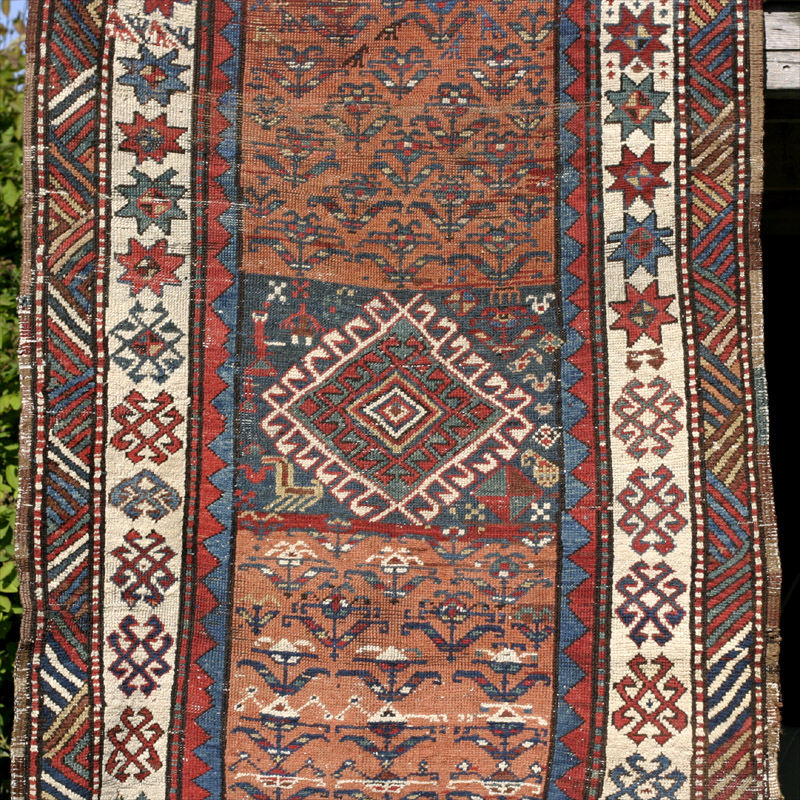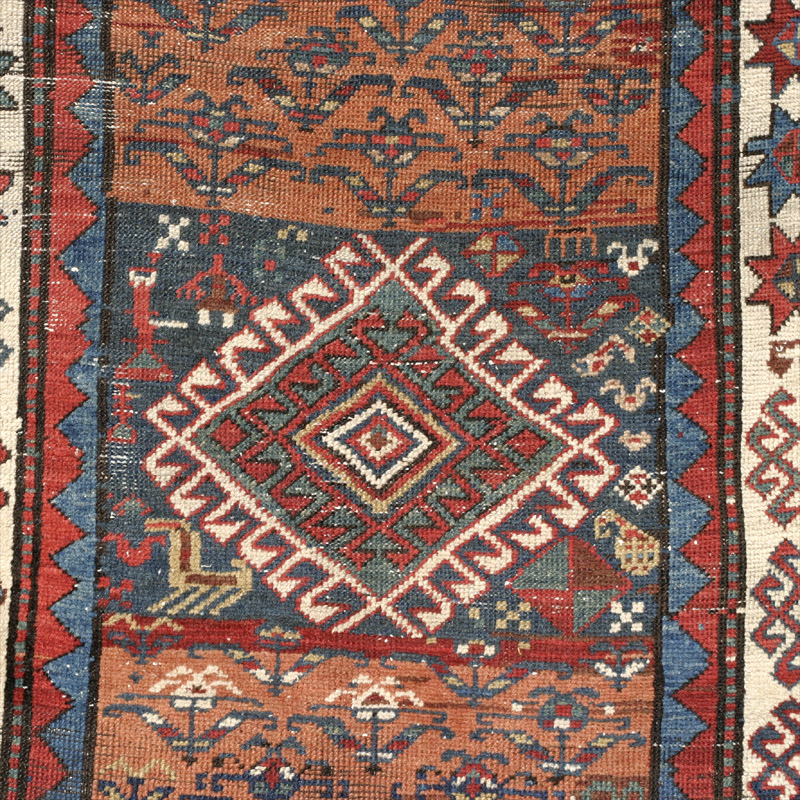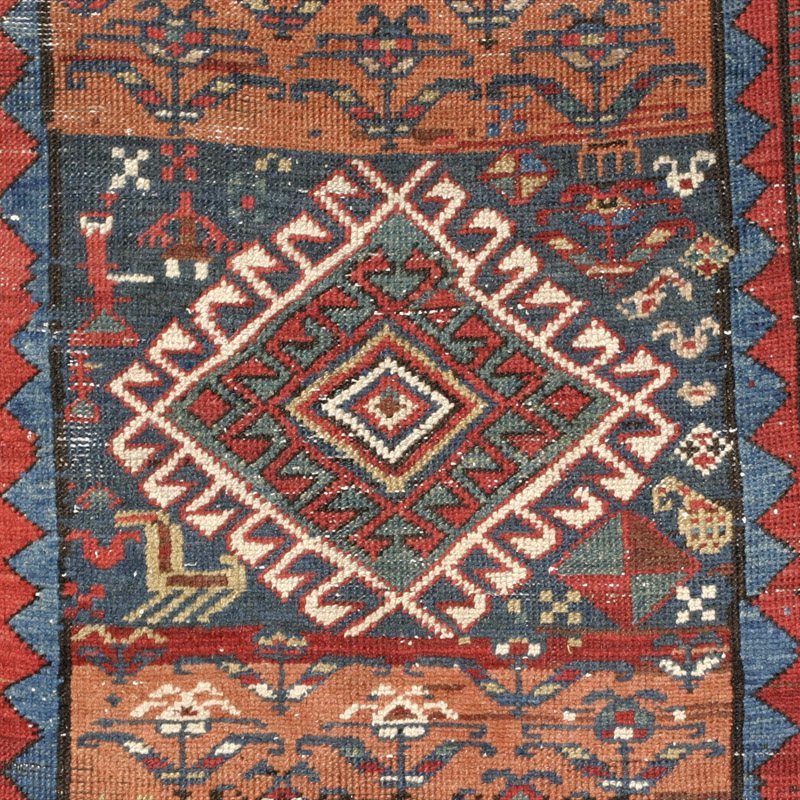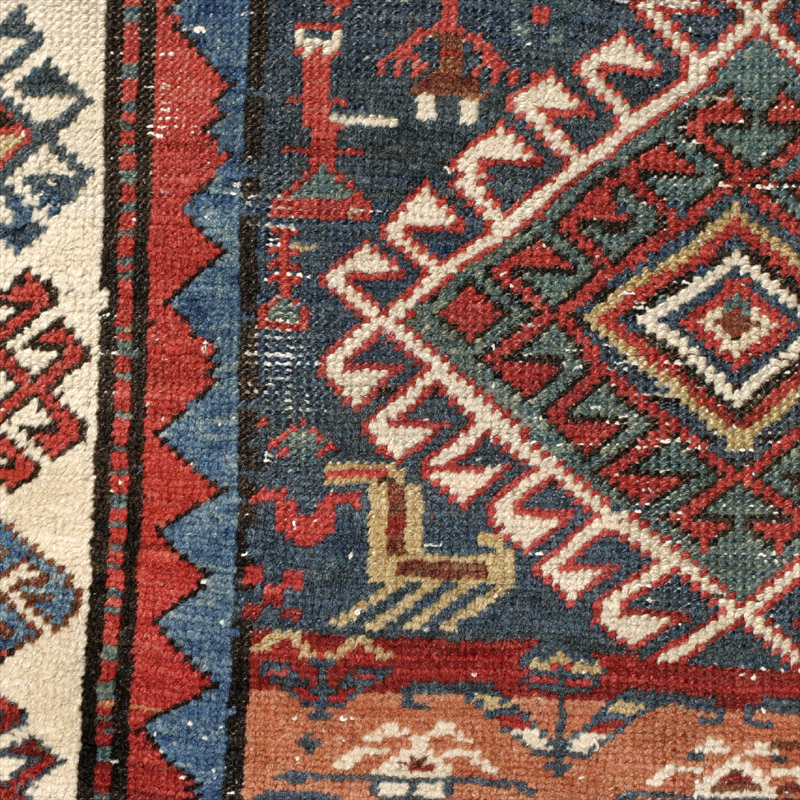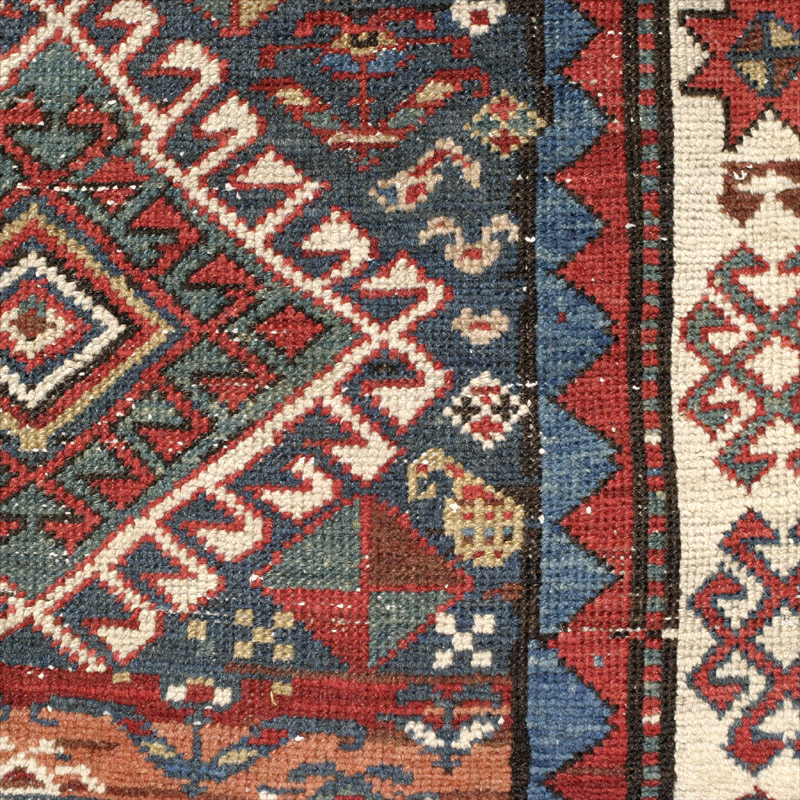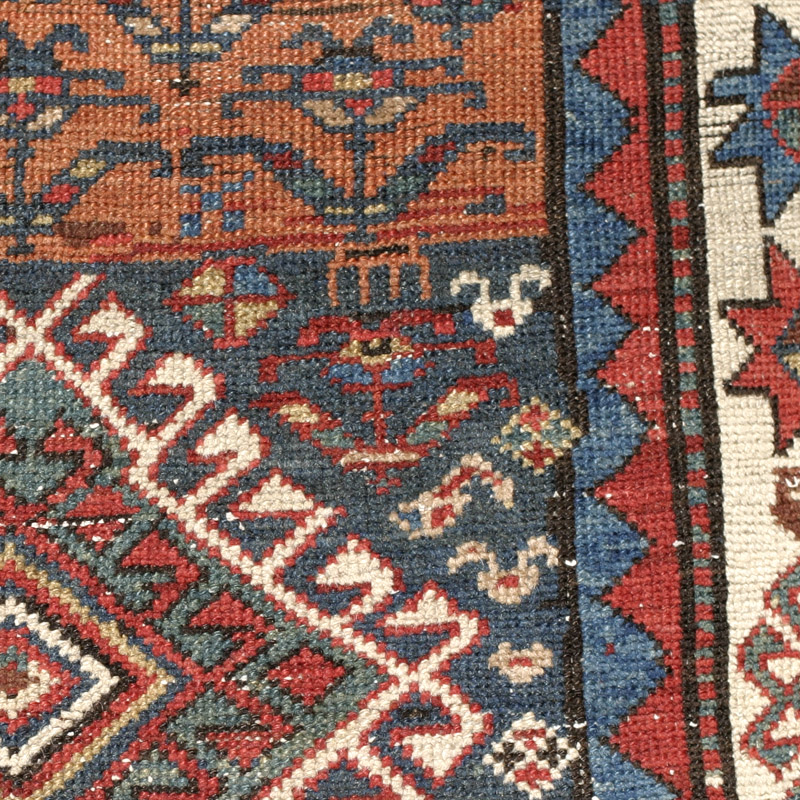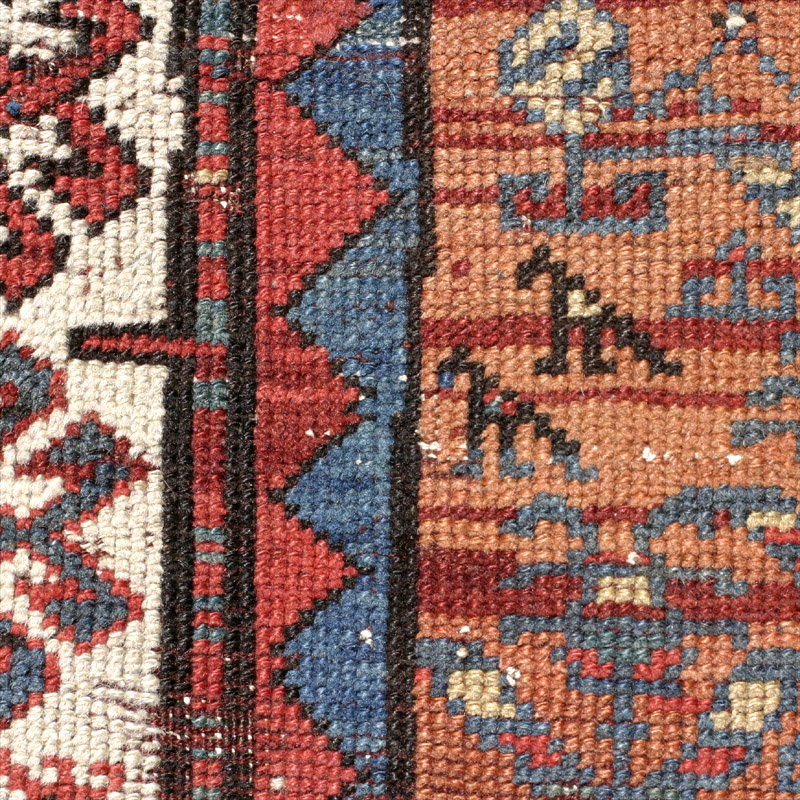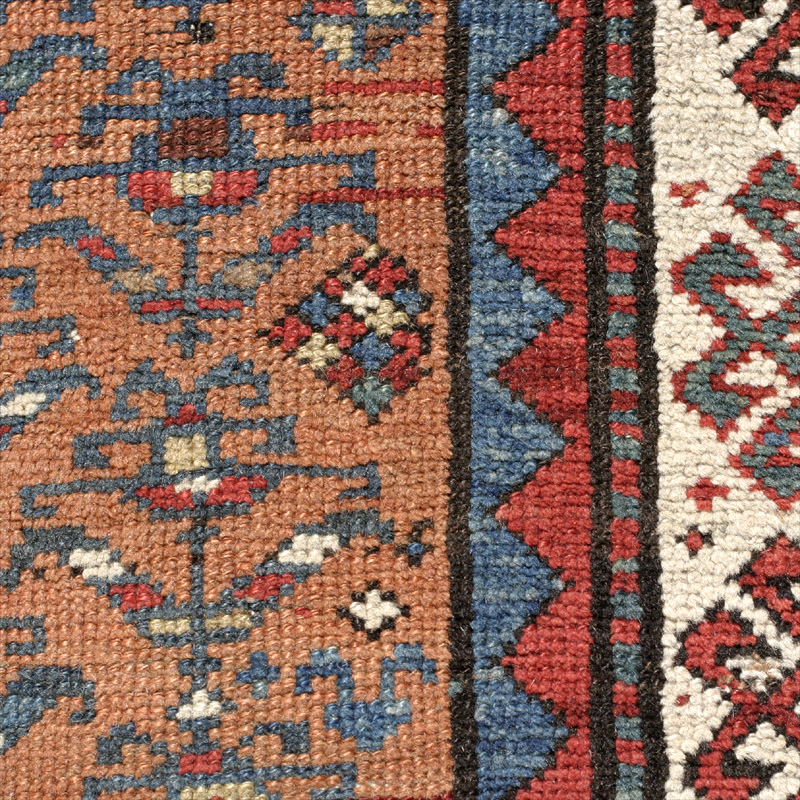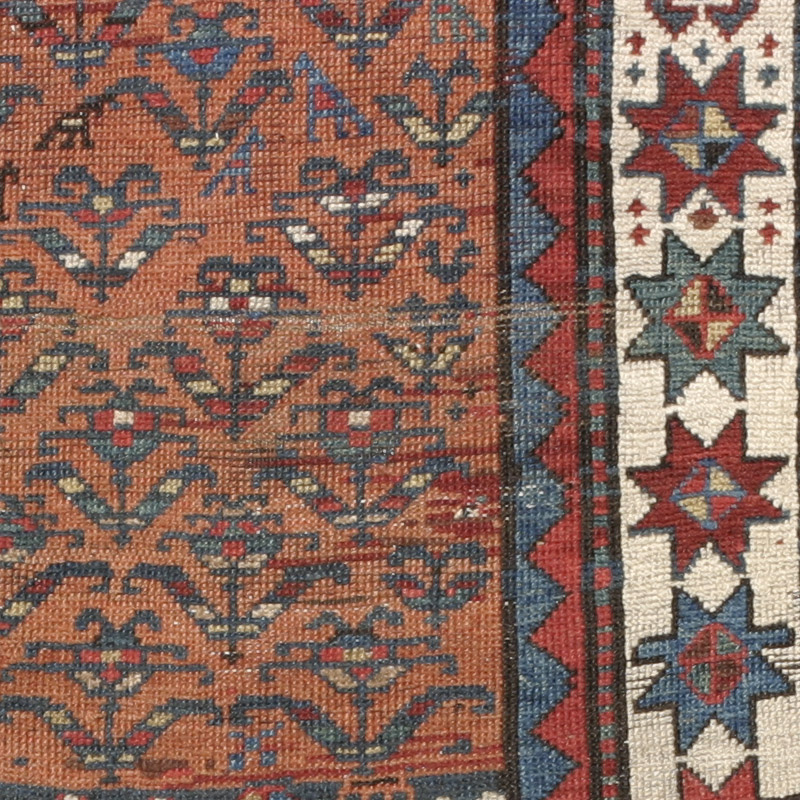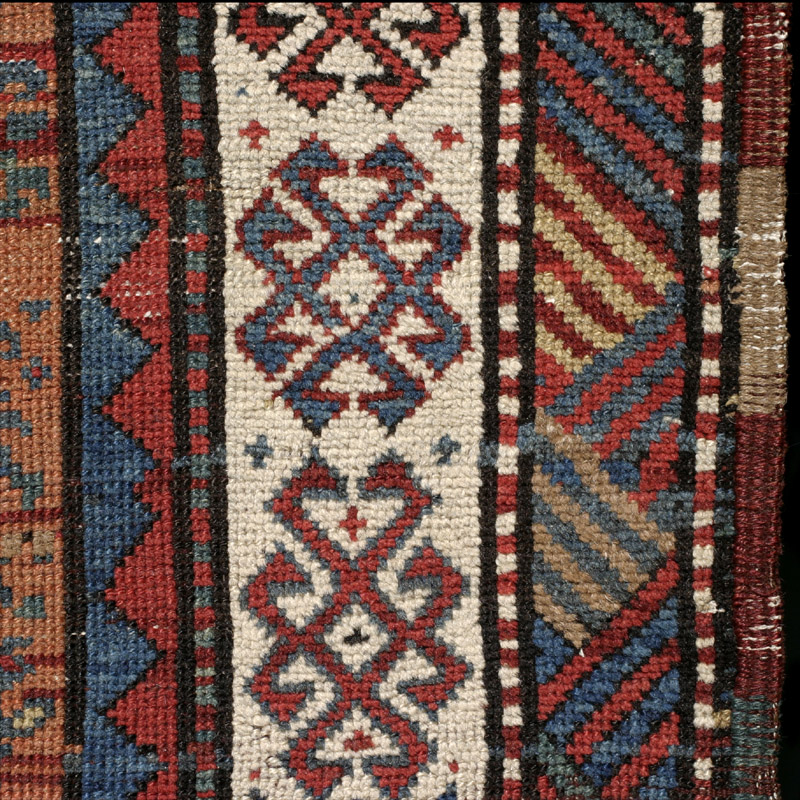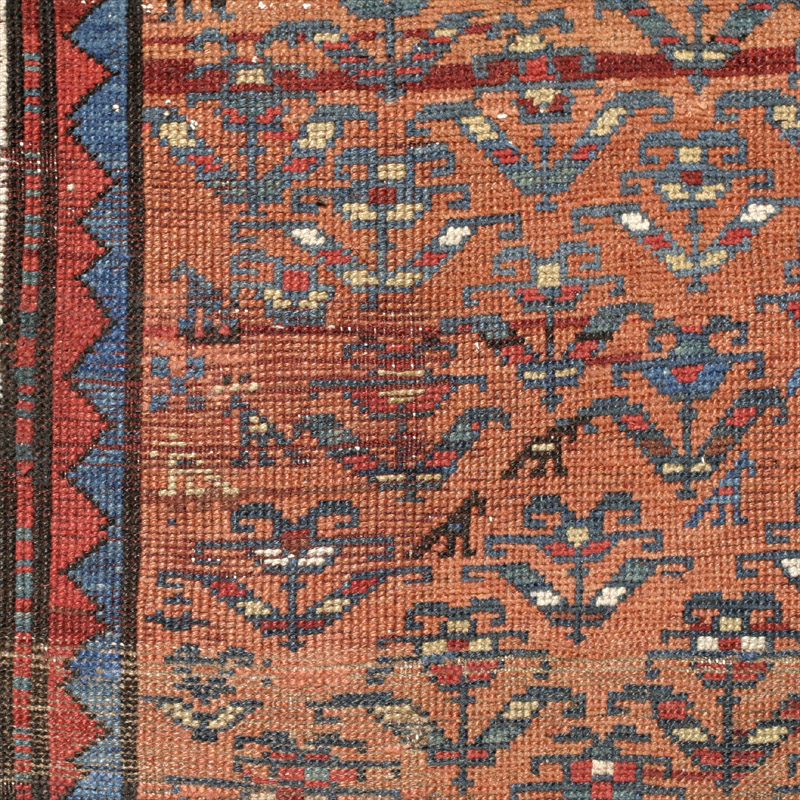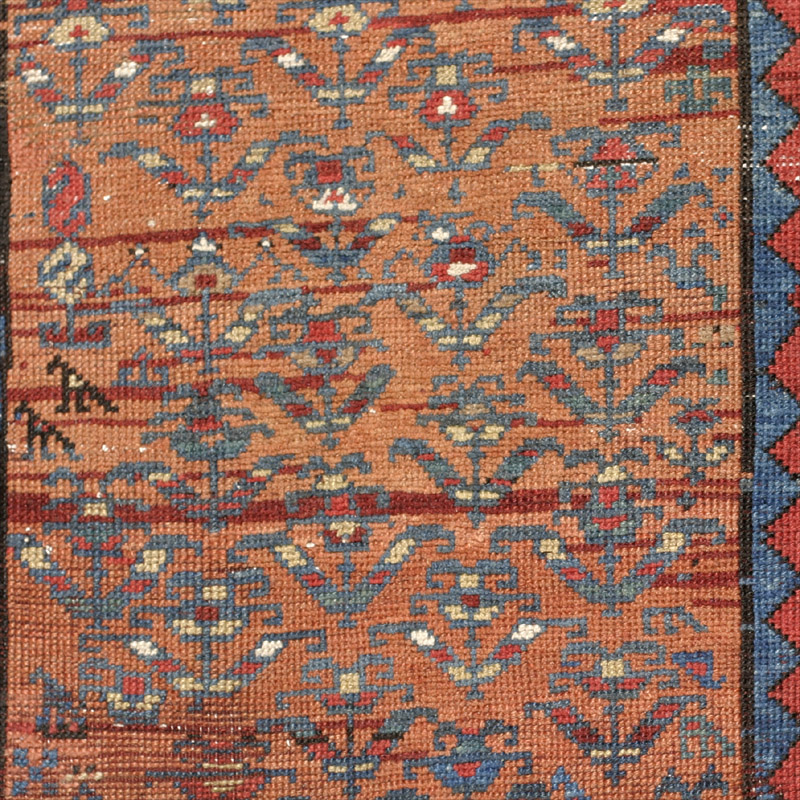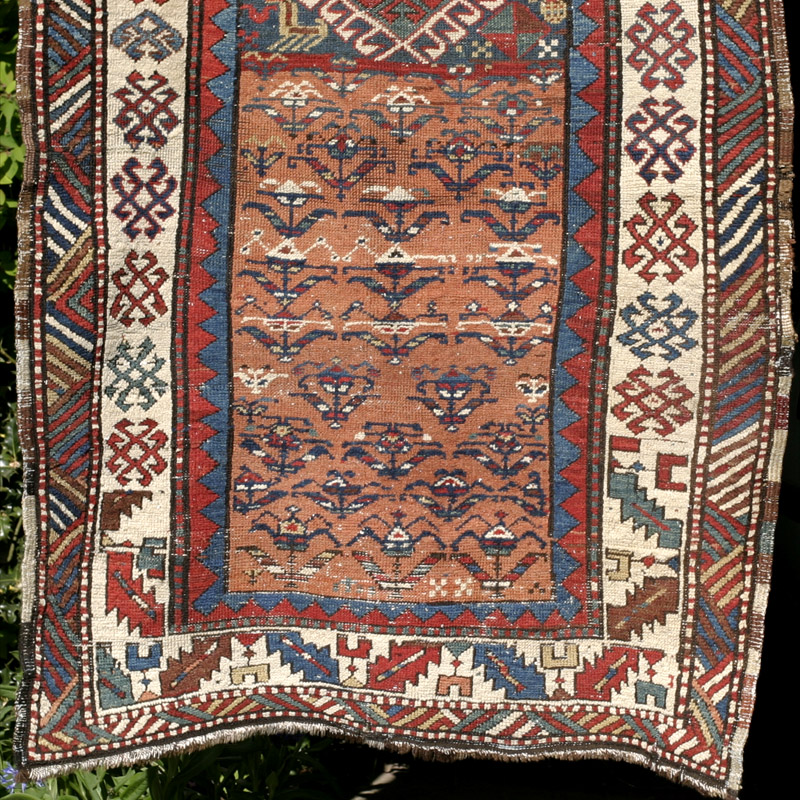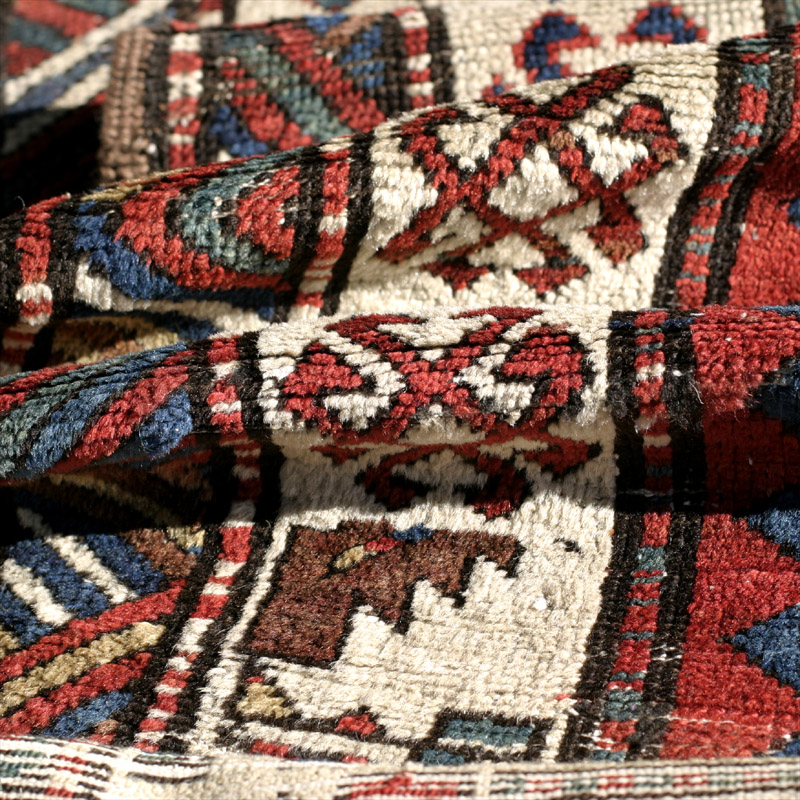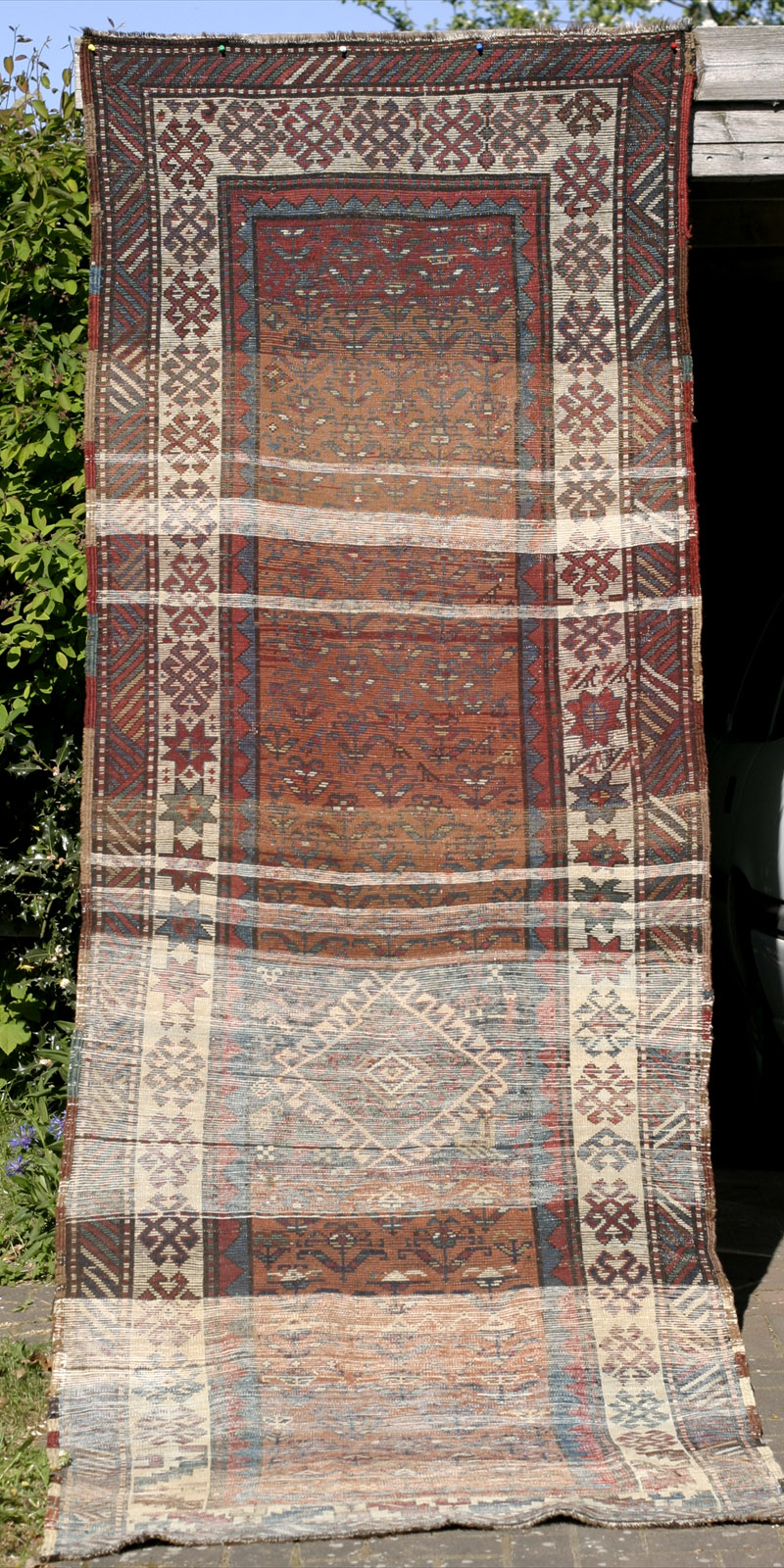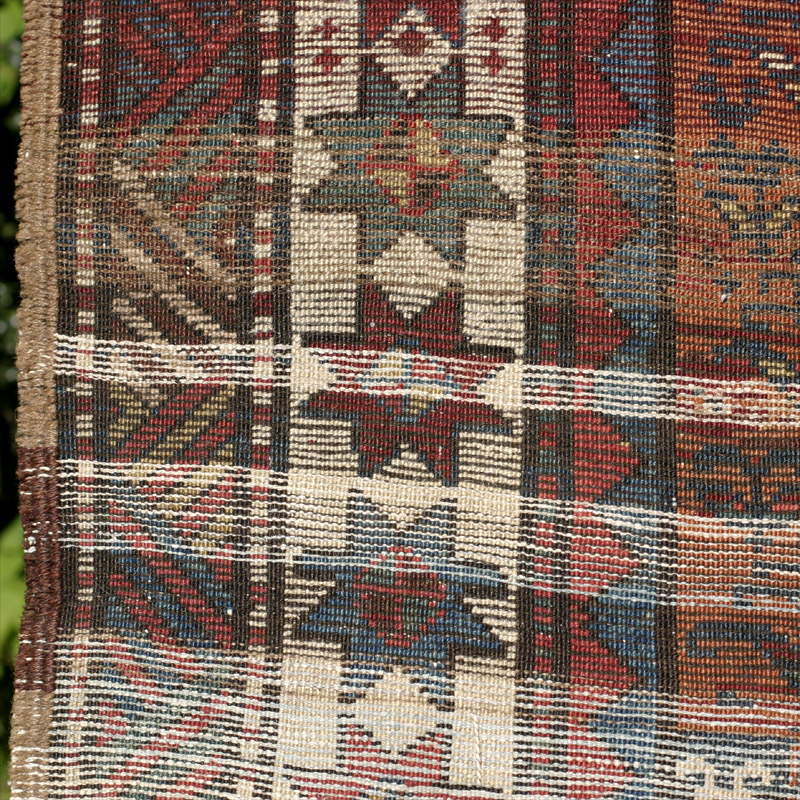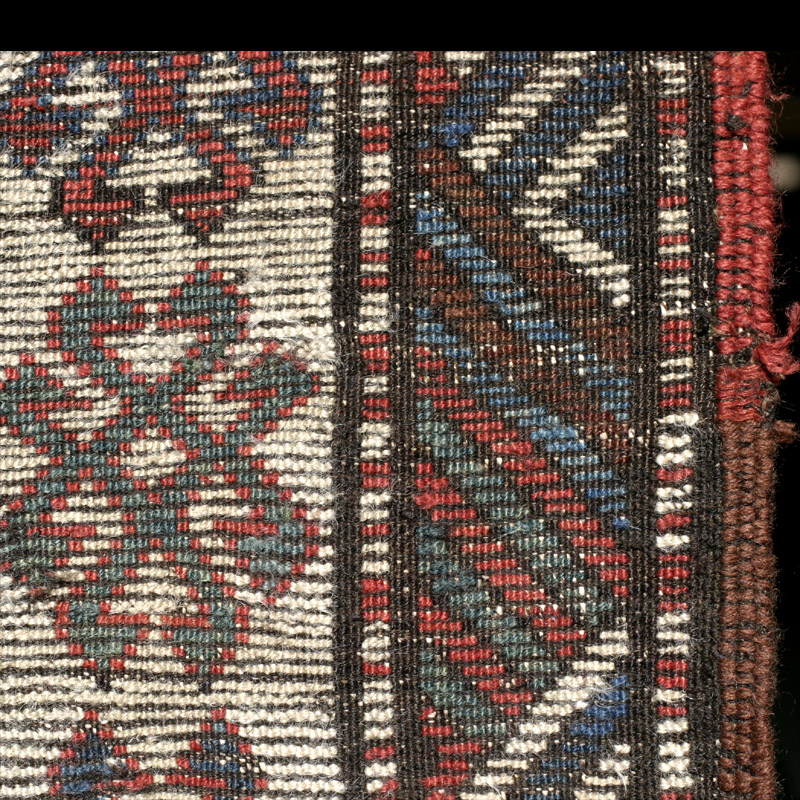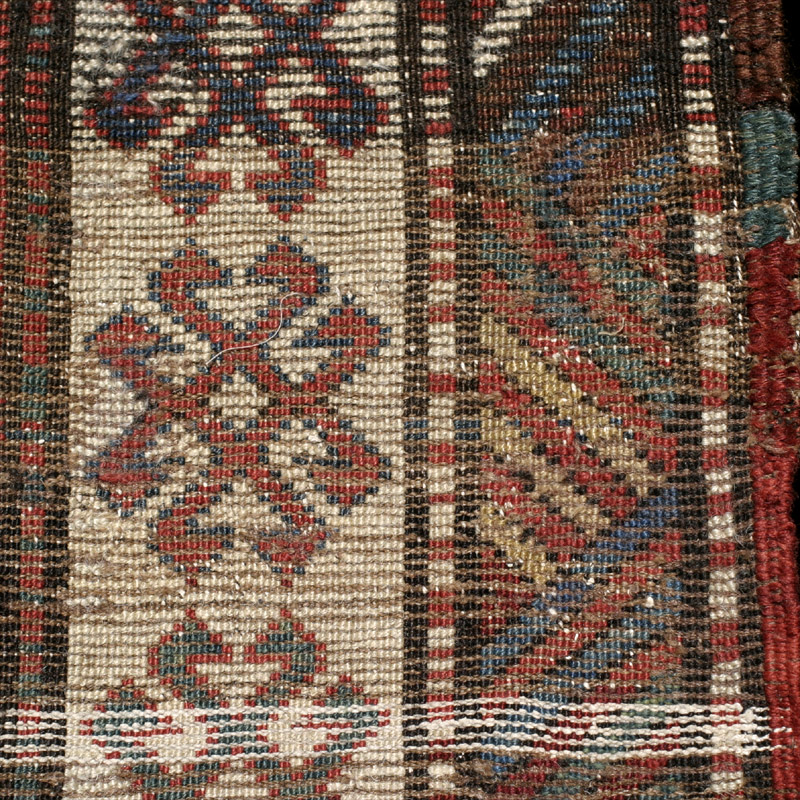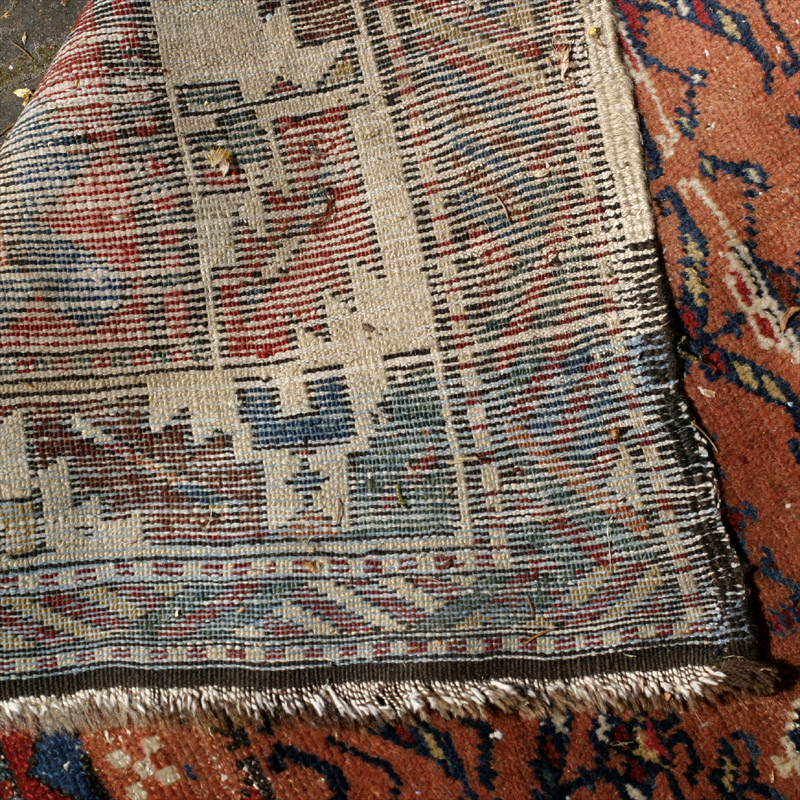The photo is stitched together from two shots in the same place. Click on image to view at larger size.
See rug in extra large size (2.5 MB).
It is difficult to place this highly unusual long rug with some certainty; it seems Kurdish work that originated in Northwest Persia or the Caucasus, probably late 19th century. Size is 294cm x 111cm (lower end) - 104cm (upper end). (Imperial values: 9' 6'' x 3' 4'' - 3' 6'').
This rug had several holes when I bought it from American ebay vendor antiqueaday who occasionally lists nice rugs, sometimes in a sorry state. Apart form the holes, the pile still seemed OK, and good colours and the unusual design attracted me. I got it restored by Walter Brew of Thunderstrand in the UK, who did a very good job, reweaving the holes in a way that it is difficult to tell where they are even when looking at the back, securing the ends, rewrapping some parts of the selvages, and repiling a few bare areas.
For once, the borders are unsusual. There are two relatively wide borders. The outer one has diagonal stripes with occasional change of direction after about 8-12 stripes in red, blue brown, white, teal, and a dusty yellow. Stripes are outlined in dark brown, in one area in red, in another outlining is missing. In the inner white-ground border, there are several unusual changes of motif; the weaver started with the caucasian wineglass & serrated leaves motif, but soon abandoned this for a hooked diamond motif. Near the centre of the field she converted to eight-pointed stars with inset diamonds; the last one on the right side flanked by two rows of reciprocal birds as they appear in Shahsavan or south Persian weaving. She then reverted to the hooked diamond motif. The selvages show the bands of colour with irregular changes which according to Eagleton support an attribution to Kurdish weavers. Eagleton also says the wine glass in the "wineglass and serrated leaves border" is usually V-shaped in Kurdish work; here, it is angular as in most Caucasian borders of this type.
The field itself is also peculiar; no shrub is like any other. The field colour shows a nice abrash from a lighter to darker cinnamon colour, changing to a saturated red right at the end, a colour that announces itself long before in a few rows interspersed here and there in the cinnamon. The shrubs are actually flowers; all look different, but they are still variations of the same motif. Here and there, animal motifs are strewn in.
The real surprise after about 2/5 of the field is the sudden switch to a large hooked nested diamond medallion on rectangular bottle green groud. The space in the corners around the medallion is filled with a medley of motifs: animals, botehs, humans, rams horns, x-shaped forms, diamonds, and one of the familiar flowers that works like a link to the rest of the field.
The structure is another interesting feature. Warps are plied from brown wool and white cotton. Wefts start white and light blue cotton (2-4 wefts, with some extra wefts inserted at times from the sides (presumably to tighten the warps); then there is a 5 inch band of dark wool wefts, a return to cotton, an area where bands of cotton and wool alternate, and finally, wool wefts moving from light brown to dark brown, occasionally interspersed by a few rows of white cotton. It seems the weaver just used whatever was available. The irregular shape of the rug (the top is narrower than the bottom) and the fact that the rug does not lie completely flat (building folds at the edges) could indicate that it was woven by nomads on a portable horizontal loom that was dismantled when the group moved to other pastures. But this is merely conjecture.
Not bad, low pile, longer at the sides, some minor fold wear (see images). The rug does not lie completely flat so it could do with some stretching. The repairs I have described above.
